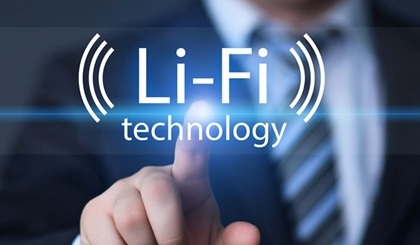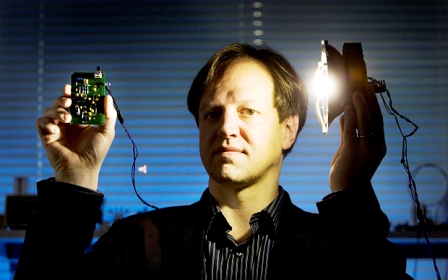Categories: Featured Articles » Interesting electrical news
Number of views: 16822
Comments on the article: 2
Li-Fi - a new technology for transmitting data through LEDs
 Since 2011, Harald Haas, a specialist in optical wireless data transmission, a professor at the University of Edinburgh (Edinburgh, UK), has been seriously promoting a fundamentally new technology for wireless data transmission through flashing LED lights. Then most university professors decided that the idea, of course, is interesting, but hardly realizable. And so, four years later, Haas nevertheless created the first router that works according to his concept.
Since 2011, Harald Haas, a specialist in optical wireless data transmission, a professor at the University of Edinburgh (Edinburgh, UK), has been seriously promoting a fundamentally new technology for wireless data transmission through flashing LED lights. Then most university professors decided that the idea, of course, is interesting, but hardly realizable. And so, four years later, Haas nevertheless created the first router that works according to his concept.
The technology is called Li-Fi (light - light, fidelity - accuracy). The new router showed such amazing characteristics that it was 100 times faster than Wi-Fi, reaching in laboratory conditions a record data transfer rate of 224 Gb / s. Testing in the laboratory was carried out by the Estonian company Velmenni. Haas even supplied his first router solar batteryto make access to the network autonomous, and at the moment the router maintains a stable speed of 10 Gbit / s through a slightly noticeable flickering of LEDs.
In order to start delivering the first production systems to the European market as early as December 2016, the inventor of Li-Fi, Harald Haas, combined his pureLiFi company with Lucibel to jointly develop and more effectively promote innovation closer to the ordinary consumer, so that in the end Finally, make Li-Fi the primary way users access the network.

The essence of technology is as follows. Three color channels of a miniature LED lamp, red, green and blue, transmit 3.5 gigabits of data per second in parallel, resulting in 10 gigabits per second. Turning the light on and off occurs at a frantic speed, generating huge arrays of binary data.
This is the so-called digital modulation with orthogonal frequency division multiplexing (OFDM), which allows the transmission of millions of light beams of different intensities per second.
Professor Haas illustrates this with the example of a watering can of a shower that releases strictly parallel jets of water, and here the light in the Li-Fi system behaves in a similar way.
Meanwhile, Chinese and German researchers also showed interest in studying this technology. Back in 2011, the Germans managed to get data transfer with a record speed of 800 Mbps at a distance of 1.8 meters, and the Chinese, using only 1 watt LED, connected four computers to the Internet at a speed of 150 Mbps.

Professor Haas emphasizes that technology based on light waves is more reliable in terms of security than Wi-Fi. It is known that a Wi-Fi network can be hacked from the outside, and intercept files, because radio waves pass through walls outside the premises.
At the same time, the Li-Fi traffic can theoretically be intercepted only in the same room where the transmitter and receiver are located, because the light does not penetrate the walls. Thus, the attackers are put a reliable barrier, they can not crack or intercept anything from the street, or even from the next room. But first of all, the advantage of Li-Fi in high speed and low power consumption (the efficiency of conventional routers reaches 5% at best).
Technology definitely has prospects. Waves of visible light have a very wide frequency range, it is four orders of magnitude wider than that of radio waves. There is no risk that the networks will be overloaded, as with Wi-Fi, neither speed nor network performance will be lost.
LEDs are widespread everywhere - the infrastructure has almost been created, and besides, LEDs can perform a dual function - a data transmitter and a light source at the same time. However, the question remains, how correctly can the system work in a bright room or in bright sunlight?

Nevertheless, the developers have high hopes for VLC ("visual light communication") - for the transmission of data by visible light, which is exactly what Li-Fi technology is called in a scientific language.
High speed Li-Fi already allows you to successfully transfer video in HD-quality, while maintaining high system energy efficiency. Another advantage over Wi-Fi is the accuracy and stability of Internet connections inside buildings. Due to the uniform distribution of the LED transmitters, the problem of weak and intermittent reception zones is essentially solved.
See also at bgv.electricianexp.com
:
